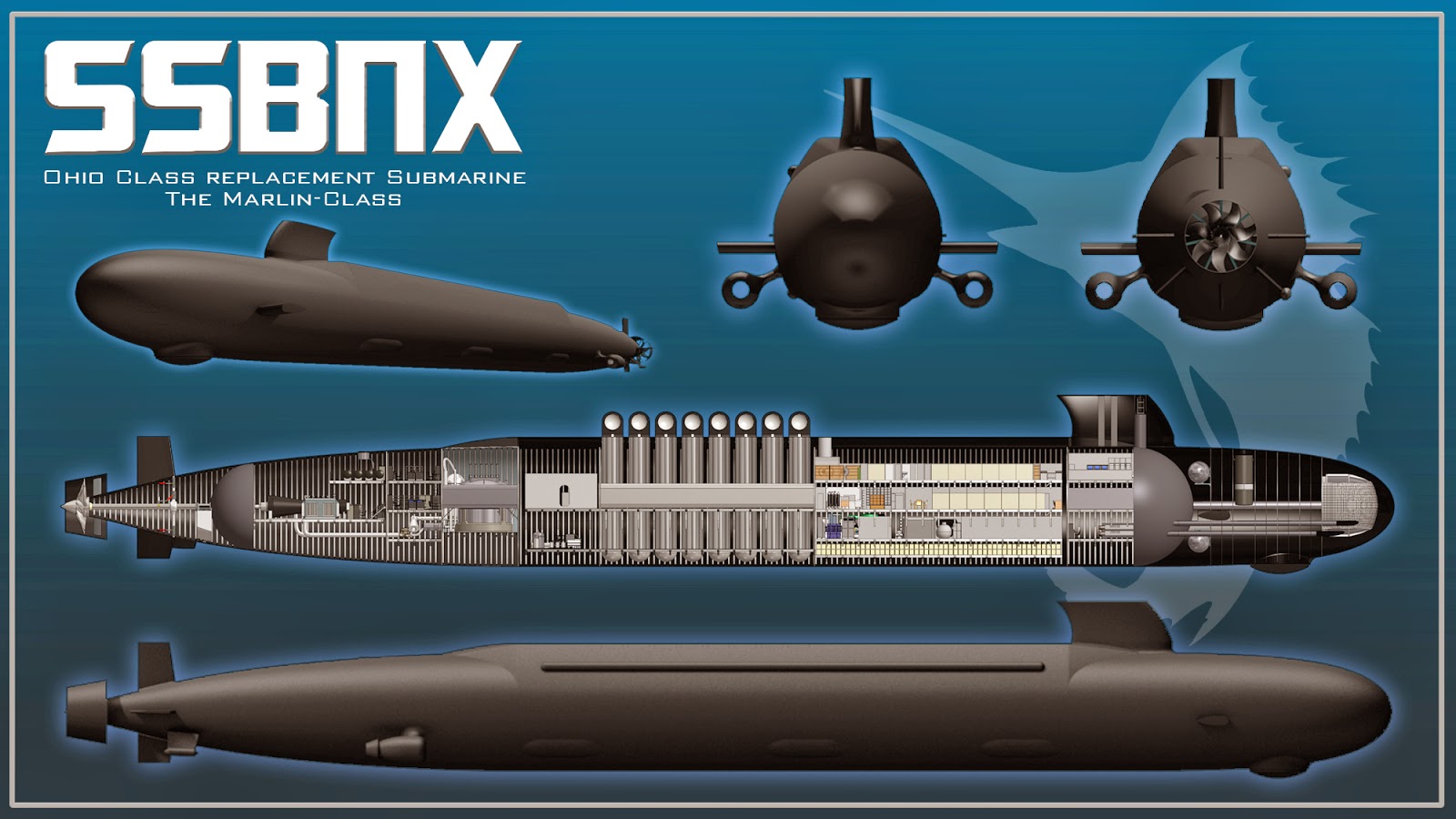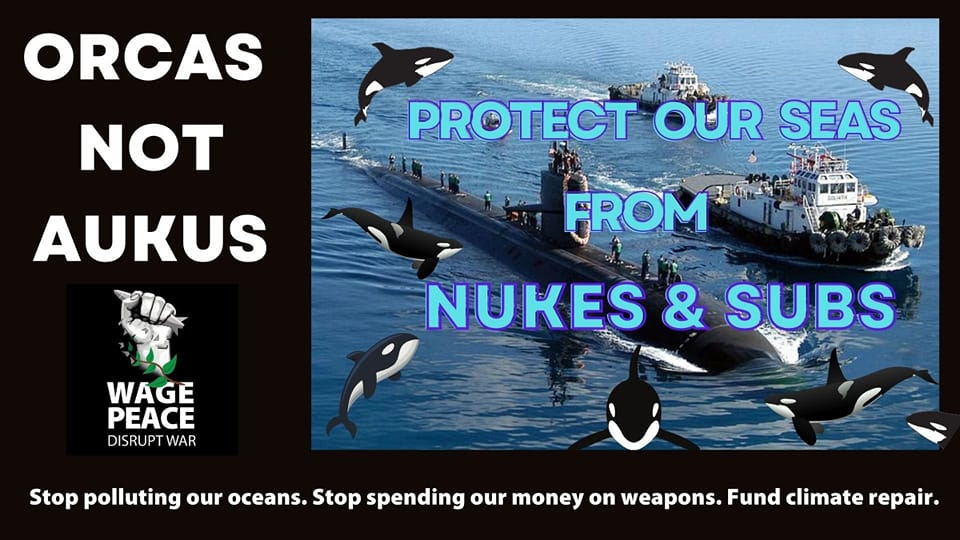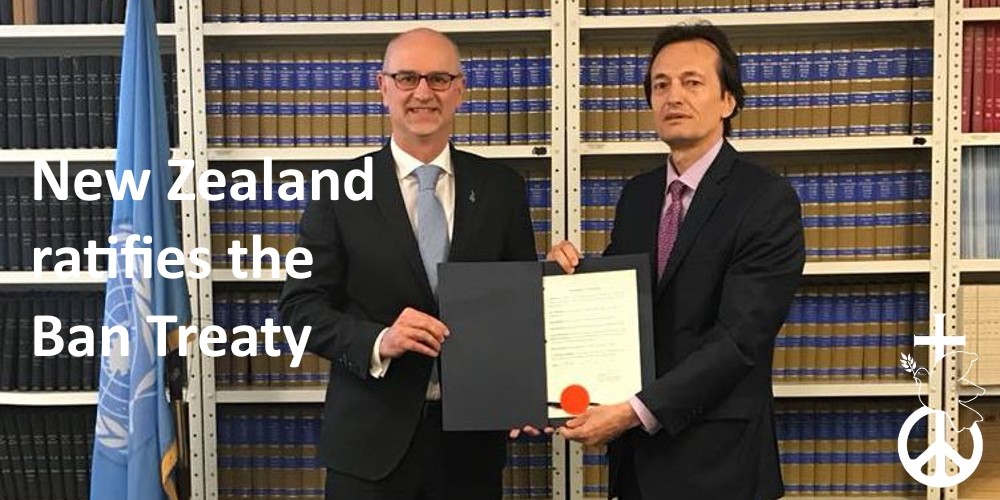
Nuclear-powered Submarines for Australia Are Just Bad Defense Policy
Mike Scrafton / Pearls and Irritations
(September 19, 2021) — The strategic implications of the nuclear-powered submarine decision include an increased likelihood of catastrophic war, abandonment of national sovereignty to the US, and inevitable trade and economic reprisals. First of all, for those who think a submarine capability is important, it is simply bad defence policy.
There are two candidates for this new submarine; the USN Virginia class and the RN Astute class. Both choices bring significant project risks, but there are sound grounds to think that Australia will go with the UK boat, or a version based on the Astute. In either case huge project obstacles face Australia. The USN procurement plans, however, invoke perennial questions about the role of the submarine and the concept of operations. More precisely, are those roles premised on independent Australian defence interests or US war plans? Basing Australian force structuring choices on US war planning is not a surprise (here and here).
The Virginia class is designed for multi-mission dominance in the littoral; originally focussed on Cold War era anti-submarine warfare (ASW), now its primary missions are covert intelligence, surveillance, and reconnaissance (ISR), the insertion and recovery of special forces, and missile strikes against land targets. The US navy (USN) has acquired 34 since 1998. However, the US program is in flux. The USN plans to phase out the Virginia class, building the final four between 2032 and 2033.
The Virginia class replacement — designated SNN(X) — is planned to have greater transit speed and stealth in all ocean environments, more diverse weapons and payloads, and a sustained combat presence. It will have a greater ASW capability against numerous sophisticated threats, including against unmanned underwater vehicles (UUVs), and be better able to coordinate with off-hull vehicles, sensors, and allies.

The step up in proposed capability to the SSN(X) is reflected in the cost; a Virginia class boat costs US$3.4 billion (AU$4.6 billion) and the estimate for the SNN(X) is US$6.4 billion (AU$8.8 billion) each. Congress is yet to approve the program and the USN has requested US$98.0 million in 2022 for research and development for the SSN(X) program, intending to procure the first vessel in 2034.
The Virginia class and the SNN(X) are optimised for different roles. Because the USN plans to stop building Virginia class before the first Australia vessel is proposed to be launched, and its replacement is not as yet designed or approved, planning on acquiring a US submarine in the middle of a change-over would be fraught in terms of cost, schedule, and capability.
Moreover, there are currently only two shipyards in America capable of building nuclear-powered ships; General Dynamics’ Electric Boat Division (GD/EB) in Connecticut, and Huntington Ingalls Industries in Virginia. The US submarine industrial base includes hundreds of supplier firms, laboratories and research facilities, and many sole-source suppliers. The USN’s requirement for two Virginia-class plus one Columbia-class boats per year from the mid-2020s to the mid-2030s has already created concern about the industrial base’s capacity. It seems unlikely that the first Australian boats could be inserted into that construction program or that an Australian construction could be supported as the USN gears up for the SSN(X).
Similarly, in the UK the Astute class are being built at the Barrow shipyard owned by BAE Systems, the only UK shipyard licensed to build nuclear submarines. The UK uses four main contractors for 97 per cent of its nuclear capability contracts and these in turn use hundreds of sub-contractors, many of which are small and specialist.
The final two of eight Astute class are currently under construction at Barrow and will be launched and commissioned in the mid-2020s. Both the Virginia and Astute programs had significant issues early on, but now the US yards produce boats largely on cost and ahead of schedule, and while costs at the UK yards have settled down, schedules are still dragging. Astute submarines rollout at around £1.64 billion (AU$3.1 billion). An Australian build seems possible in the UK commencing in the late 2020s with the first launch optimistically in the mid-2030s.
The prime minister said, “We intend to build these submarines in Adelaide, Australia, in close cooperation with the United Kingdom and the United States,” although he has apparently conceded the first boats might be built offshore. The practical considerations involved in the South Australian site add additional cost, capability, and schedule risk. Adelaide will need to be accredited to build nuclear powered vessels, but will probably not see any work until the late 2030s. Accessing, or transferring, the myriad of highly sophisticated and specialised services and products that come from small, often sole-source, suppliers currently located in the UK and US will be challenging.
The relevant human expertise is in short supply and the relevant market segments are comprised of either a few major players or a proliferation of smaller niche providers. Contracting in this environment will put pressure on a defence procurement organisation that has failed in the past in far easier, more familiar transactions. Intellectual property issues and security classifications will prove interesting. The complexities of project management and industry involvement will be enormous.
There can be little confidence that the Australian government can manage this project to a satisfactory end based on past experience. Another shambles is in prospect; an unsupportable and compromised capability, and delivered late and over budget. For the submarine advocates, the situation is worse than before. For Australian citizens, the risks are high and the opportunity cost immense.
Australia will still be without a new submarine capability until the 2040s but the results of the provocation of the nuclear-powered decision will be felt in the near future. Contrary to fantasies of decoupling harboured in various think tanks, Australia’s hubris will see it excluded from the Chinese economy. The ASEAN and the Pacific states will see the paternalism of the English-speaking former colonial powers returning to tell them what they need. This will just enhance Chinese opportunities for influence.
And as the UK retreats from its absurd global Britain delusion and the internally conflicted US retreats across the Pacific, Australia will be alone in the Asia Pacific, possibly without its new toys.
Mike Scrafton was a Deputy Secretary in the Victorian Department of Sustainability and Environment, senior Defence executive, CEO of a state statutory body, and chief of staff and ministerial adviser to the minister for defence.
Comments
Alison — Here is more on the submarines from a fellow Australian former diplomat. We will pay for them whether we get them or not — that’s what AUKUS means: “yousuckeraustralia.”
Mack — My digging so far has established:
• A US Congressional report recently has expressed considerable concern at delays in construction (3 in pipeline) and particularly in regular maintenance of the Virginia class subs seemingly the main option given interoperability.
• British Astute-class has had a chequered history. First one took 7 years from keel-laying to operational. Cramped and can’t carry as many cruise missiles. And Brits have just let major contract to design its replacemen,t which will consume significant UK R& D personnel.
So, given its likely obsolescence, who knows? We may never get a new sub!
In any event, from a purely military perspective, the other items on the list would likely be more useful.
Bear in mind also Scomo and Dutton have 3 other major defence procurement programs underway and all of them are experiencing worrying cost overruns, construction delays and some quite serious underperformance.
• JF fighters • Frigates • Army vehicles: We cannot seem to get any of them right. This has to be an augury with the subs. And if we go with the Americans our subs will always come second to theirs on the construction lines.
But there are a lot more angles on all of this.
Geoff — Yes, I think that there’s an element of “smoke and mirrors” in all this. As Peter Hartcher said on “Insiders” this morning, before AUKUS we had a contract with Naval Group to build submarines. Now we have a statement of intent to establish an inter-Departmental committee, to look into how best to build fewer submarines which will take longer and cost more! So really any talk of how they will counter Chinese plans or activities can be put off for more than 20 years!
Richard — Geoff, Mack and Cavan. May I say that you three have made some excellent points in Pearls and Irritations.
So did Allan Behm in the latest Nautilus, especially how our nuclear-propelled attack subs could help prevent China’s four Chinese missile-capable boomers from escaping their Hainan base into the wider Pacific to launch missiles at the US mainland – their ‘second-strike’ capability. If China loses this capability, we become very much a Chinese first-priority nuclear target. Allan also makes the point that pro-nuclear hawks in Korea and Japan will now be all the more insistent on developing their own nuclear driven (and armed) submarines. Morrison, Dutton and Payne are thoughtless and mindlessly provocative.
Mike Scrafton’s article in Pearls sends a dash of cold water on Morrison’s easy assumption that such boats could be made here, given the myriad and complex network of contractors and sub-contractors in the US and the UK that construct their Virginia and Astute class boats. Which leads one to suspect the AUKUS is a colossal fraud perpetrated by a government that wants to win a khaki election – create the threat, make it go away, and wedge Labor in doing so.
Posted in accordance with Title 17, Section 107, US Code, for noncommercial, educational purposes.
Peace Group Welcomes New Zealand’s
Ban on Australian Nuclear Submarines

The New Zealand Peace Foundation
(Special to Environmentalists Against War)
(September 19, 2021) — The New Zealand Government’s announced continuation of its anti-nuclear policy, which will ban any future Australian nuclear submarines from entering New Zealand waters or ports, has been welcomed by long term peace activists, the International Affairs and Disarmament Committee of the Aotearoa /New Zealand Peace Foundation.
New Zealand’s world-leading Nuclear Free legislation was hard fought for by Peace Squadron sailors confronting nuclear warships, grass roots activists and the David Lange government, says Richard Northey, chair of the Peace Foundation’s International Affairs and Disarmament committee.
“I personally sailed in front of the nuclear submarine Haddo and then, as Eden MP, voted for the anti-nuclear law’, says Mr. Northey.
“It will keep Australian nuclear-powered submarines away from New Zealand as effectively and justifiably as it has kept nuclear-powered or nuclear-armed warships from other countries out of New Zealand waters for the last 36 years, including those from China, India, France, UK and USA.”
Mr. Northey says it is important to retain our ban on nuclear powered or armed warships.
“If we allowed any nuclear submarine into Auckland or Wellington Harbours a nuclear accident resulting from collision, grounding, fire, explosion or reactor leaks could have dire consequences for human and marine life and jeopardise shipping, fishing, recreation and other marine based activities for generations.”
“Another concern is that the nuclear reactors in the submarines to be acquired by Australia use highly enriched uranium (HEU) rather than low-enriched uranium (LEU) – the normal fuel for nuclear reactors. HEU is the principal material required to make a nuclear bomb.
This is why the JCPOA — the Iran nuclear deal — restricts Iran to producing only LEU (under 20% uranium enrichment).
Although Australia is not interested in using HEU to make a nuclear bomb, providing Australia, a state member of the Nuclear Non-Proliferation Treaty (NPT), with HEU (at around the 50% enrichment level) for nuclear-powered submarines, could open the floodgates to other countries acquiring HEU powered submarines in order to develop a capacity to then make a bomb.
This development could throw a spanner in the works of the upcoming NPT Review Conference early next year.
Also of concern is the fact that the new Australian submarines, while not nuclear armed, appear to be part of an escalating political and military confrontation between the new AUKUS alliance (Australia, UK and the USA) and China following the adoption of the new AUKUS defence pact announced on September 15th. Such confrontation risks a very destructive war, is unlikely to resolve the differences with China and is immensely wasteful and damaging to building a peaceful, equitable and collaborative world.

Any concerns about China’s military activities and human rights record, need to be dealt with through diplomacy, seeking common security, the application of international law, and utilizing conflict resolution mechanisms including those available through the United Nations and the UN Convention on the Law of the Sea.
We appeal to the Australian government to re-think its approach, refrain from further conflict escalation, and give increasing priority to key addressing serious human security issues of today and tomorrow including the COVID pandemic, climate change, famine and poverty, rather than pouring resources into Great Power rivalries which were so disastrous in the 19th and 20th centuries.
We welcome New Zealand Prime Minister Ardern’s reaffirmation of the NZ nuclear free policy and the New Zealand government’s primary focus on diplomacy, and we support those voices in Australia, including the distinguished former Prime Minister Paul Keating, which are calling on their government to re-think and reverse this decision.”
Contact: Richard Northey, Chair, International Affairs and Disarmament Committee, Aotearoa / New Zealand Peace Foundation. The International Affairs and Disarmament Committee of the Aotearoa /New Zealand Peace Foundation is a group of experienced New Zealand researchers and activists in the field of international affairs and disarmament that operates independently under the umbrella of the Aotearoa / New Zealand Peace Foundation.